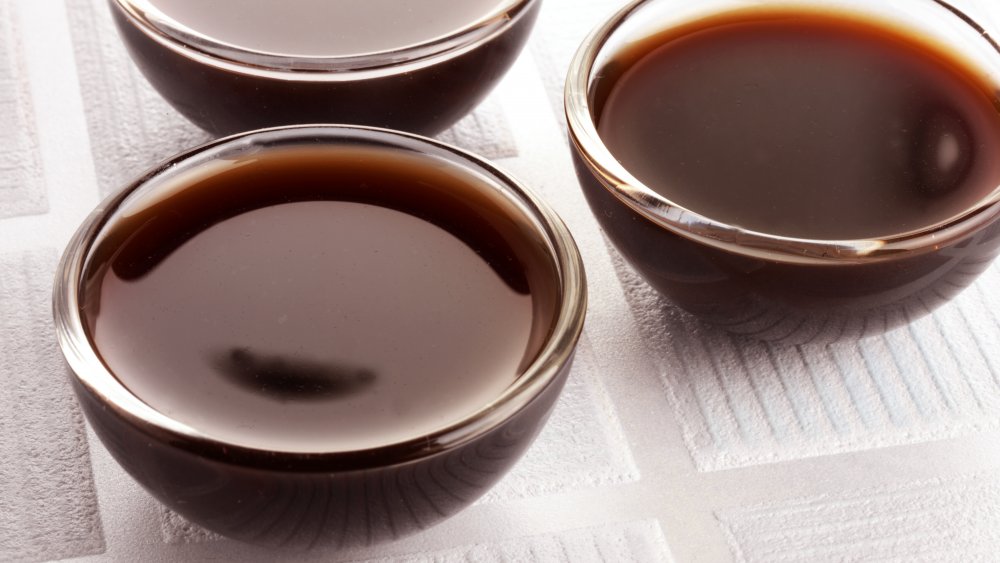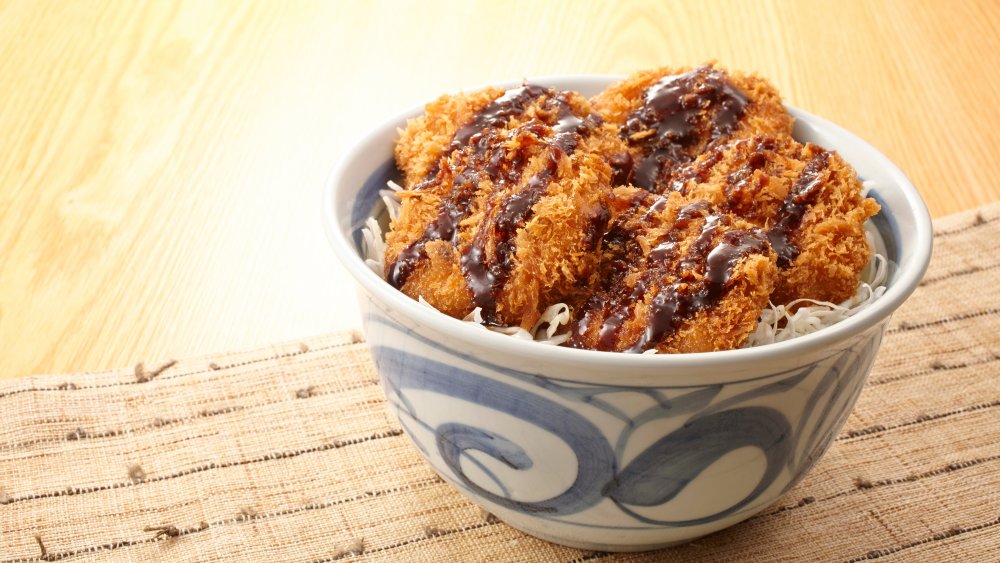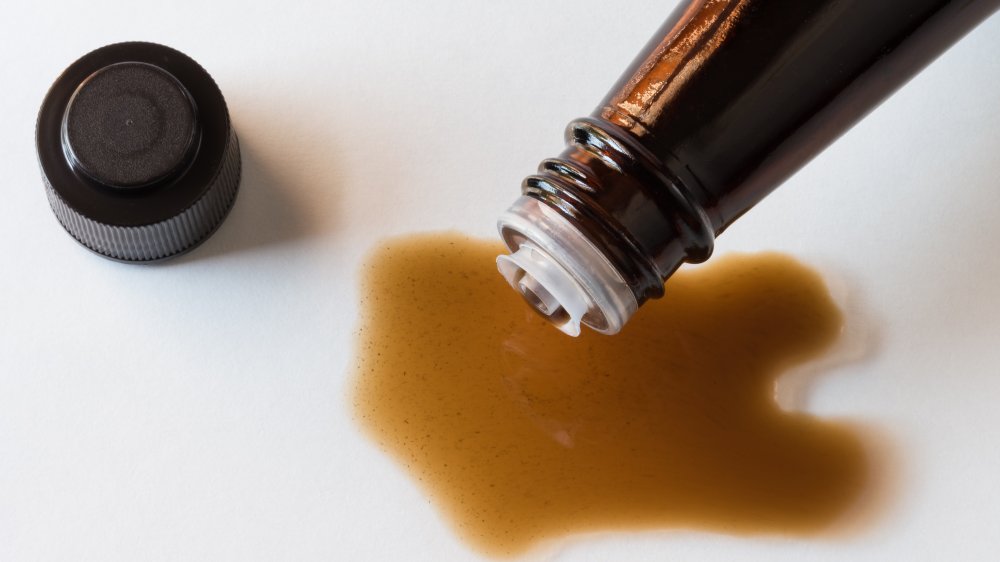The Untold Truth Of Worcestershire Sauce
Fans of Worcestershire sauce, a vinegary condiment usually used on meats, may have wondered what the ingredients are that make it so distinctive. They also may wonder why it is called "Worcestershire," which is hard to pronounce and difficult to remember how to spell correctly. Also, "Worcestershire" is always capitalized. The sauce has a long and interesting history.
Barbecue fans may not realize it, but Worcestershire sauce is an ingredient in many barbecue sauces. The reason Worcestershire sauce is such a common ingredient is because the sauce itself has so many flavors. It has sweetness from molasses, it's acidic from vinegar and tamarind, and it's salty as a result of soy sauce and anchovies (via HuffPost).
The sauce has been around for quite a while. It was invented in India, according to David Burton, the author of The Raj at Table: A Culinary History of the British In India, when Lord Marcus Sandys, a former governor of Bengal, brought the sauce to England from India.
In 1835, Sandys took the recipe to a chemist shop run by John Lea and William Perrins (those names may sound familiar) in Worcester. He asked them to use his recipe to brew a batch of the sauce.
Creating sauce out of failure
The first try didn't work out well, resulting in a sauce that was extremely spicy, and their wives weren't huge fans of it. They left the sauce in a barrel and forgot about it. A few years later, they found the barrel and decided to try the sauce again. This time, they liked it. The time for aging had improved the flavor substantially. They then purchased the recipe from Lord Sandys and the results are available on most grocery store shelves today all over the world. The sauce, named after the town, is pronounced woo-ster-shire sauce (via Cambridge Dictionary).
However, the sauce available in grocery stores today has been slightly tweaked from the original formula, which originally contained pork liver.
With the exception of the change of Worcestershire sauce for American markets and tastes, Lea & Perrins have not changed their formula since it was first made in 1835. They trademarked the name in 1892 and began manufacturing it in 1897. Old records show that bottles were sold all over the world and were sent to Malta, Singapore, South Africa, Gibraltar, India, Australia, New Zealand, Argentina, Mauritius, Chile, Peru, Jamaica, and Canada. There are even records of the sauce being sent to New Orleans and Cincinnati (via The New York Times).
Worcestershire sauce throughout history
The sauce has always been popular, something that is evidenced in shipwrecks found in Tibet and archeological excavations conducted in New Zealand, where old bottles of the sauce were found.
Also, the design of the bottle is intentional — and not just because it looks great. Lea & Perrins designed it to be optimal for shaking well before use, and the long neck on the bottle makes this easy.
Today, 25 million bottles are produced each year and find their way to 140 countries. During World War II, they had to temporarily change the label when the factory that produces it was bombed during an air raid. The sauce was produced nonetheless, with a temporary label that stated: "Messrs. Lea & Perrins are compelled to issue this label owing to the destruction of their printer's establishment by enemy action."
Worcestershire sauce is a key ingredient in Bloody Mary cocktails, which were invented in Paris in 1921, so today it is even found behind the counters in bars (via Esquire).


